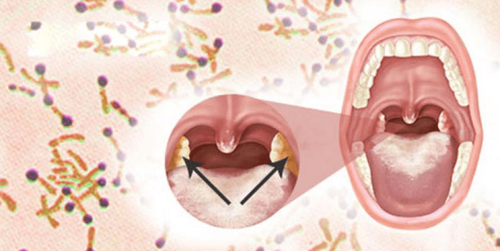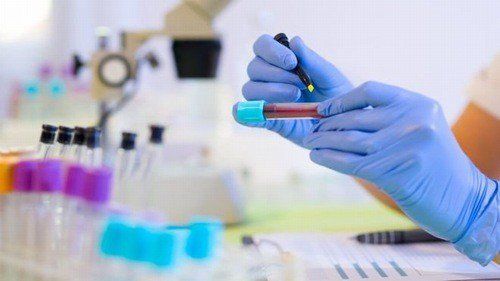This is an automatically translated article.
The article was written by Resident Doctor, Doctor Nguyen Thi Thuy Hang - Doctor of Microbiology, Laboratory Department - Vinmec Times City International General Hospital.
1. Diphtheria bacteria
Diphtheria (Corynebacterium diphtheriae) is a Gram (+), polymorphic, aerobic, non-motile, non-spore forming bacillus, the size is about 1.5 - 5 μm X 0.5 - 1 μm , bulge at one end resembling a drumstick or bulge at both ends resembling a dumbbell. Bacteria have high resistance outside the body and withstand cold and dry. If protected by mucus, bacteria can live on objects for days to weeks; on fabrics can live 30 days; in milk, drinking water live up to 20 days; in the cadaver lived for 2 weeks. Diphtheria bacteria are sensitive to physical and chemical factors. Under direct sunlight, bacteria will be killed after a few hours, diffused light will be killed after a few days. At 580 C, bacteria can live for 10 minutes, at 1% phenol and 60 degrees of alcohol can live for 1 minute.
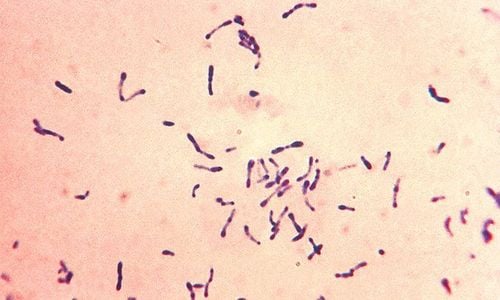
2. Ability to cause disease
Diphtheria is an acute infection caused by the bacterium Corynebacterium diphtheriae. Humans are reservoirs of diphtheria bacteria. The disease is transmitted mainly through contact with sick or healthy people carrying the infection by respiratory secretions or through skin lesions containing diphtheria bacteria.Corynebacterium diphtheriae penetrates through the nose, mouth and then locates in the upper respiratory tract mucosa, after an incubation period of 2-4 days, in strains capable of secreting toxins, toxins are produced, attached to membranes cells and then cross the membrane into the blood and spread to the organs.
Tissue necrosis is very intense at the site of colony growth, the local inflammatory response combined with tissue necrosis to form a secretory plaque that is clinically known as pseudomembranous or epiglottis, which has the ability to The ability to spread quickly, when the toxin is produced a lot, the inflammatory area spreads and deepens.
The pseudo-membrane adheres very firmly to the mucosa; Membrane includes: inflammatory substances, necrotic cells, fibrin, red blood cells, white blood cells, epidermal cells, pus cells, this membrane heals naturally during the recovery period. Diphtheria bacteria are found in abundance in pseudomembranous membranes, but are not normally found in blood and internal organs.
Diphtheria toxin can damage any organ or tissue, but mainly the heart, nervous system, and kidneys. A very small amount of the toxin can cause skin necrosis. Although diphtheria antitoxin can neutralize toxins in the blood, or toxins that have not yet been absorbed into cells, it is not effective once the toxin has penetrated the cells.
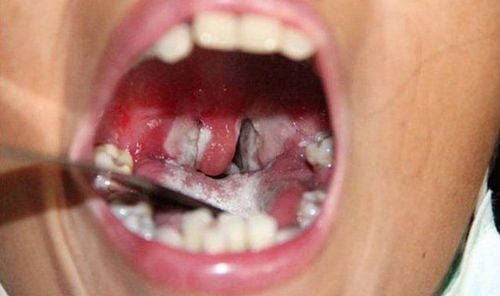
3. Laboratory diagnosis
Specimen: Diphtheria pseudomembranous membrane, or swab the throat with a sterile cotton swab. Direct endoscopic staining: Usually 2 slides, one alkaline methylene blue (or Albert or Neisser) to see granules and morphology of diphtheria bacilli; a Gram stain to see other bacteria. If you see a club-shaped bacillus, with chromosomal granules, it is very significant in the diagnosis of diphtheria. Diphtheria progresses very quickly. When a patient shows signs of infection, toxicity, a false membrane, and direct staining results in the shape of diphtheria bacilli, a preliminary diagnosis can be made, helping doctors to treat them promptly to save the patient's life. Culture, identification of diphtheria bacteria: To confirm the virulence of diphtheria bacilli, it is necessary to determine their exotoxins by using Elek reaction or ELISA method, particle agglutination, convective immunoelectrophoresis, agglutination, neutralization reaction of rabbit or guinea pig skin.... Determination of exotoxins of diphtheria bacilli: only necessary when occurring outside of epidemics, not necessary during outbreaks.
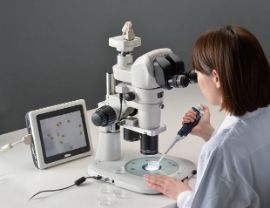
4. Diphtheria prevention
The most important measure to prevent diphtheria is the use of diphtheria toxoid vaccine (usually combined with the antitoxin of tetanus and pertussis bacteria called DPT vaccine). In Vietnam, this vaccine is part of the expanded immunization program and is given to children 3, 4 and 5 months old. Get a booster shot one year after the third dose. In the event of an outbreak of diphtheria, the outbreak must be detected promptly. Extinguish the outbreak by treating and isolating patients, disinfecting the environment, limiting large gatherings of children, and possibly providing preventive treatment for high-risk subjects. Vinmec International General Hospital is one of the hospitals that not only ensures professional quality with a team of leading medical professionals, a system of modern equipment and technology. The hospital provides comprehensive and professional medical examination, consultation and treatment services, with a civilized, polite, safe and sterile medical examination and treatment space. Customers when choosing to perform tests here can be completely assured of the accuracy of test results.
Please dial HOTLINE for more information or register for an appointment HERE. Download MyVinmec app to make appointments faster and to manage your bookings easily.






